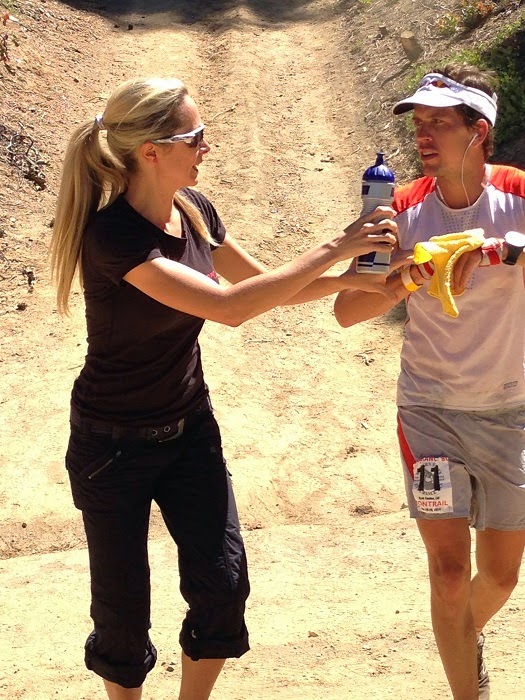Do you know what an FKT is? I didn’t until
recently. In South Africa they weren’t common place until Ryan Sandes and Ryno
Griesel demolished the best time for the Drakensberg Traverse. Ie the ‘Fastest
Known Time’ for that route. Here in the good old US of A, the home of long
distance trail running they are sought after, documented and even debated in
depth on a website http://fastestknowntime.proboards.com/
Maybe an FKT is a Strava for grown ups? Those of
us using Strava to document our regular training runs are familiar with trying
to run a certain trail the fastest, or at least comparing our time with our
peers. FKTs here seem to have a certain appeal to a certain runner. There’s
definitely an element of chest thumping (although female FKTs are also on the
increase) but also a desire to just go out, alone, unsupported and run a trail,
whenever.
 |
| My Wildwood end to end FKT 'attempt' |
Here in Portland we have Forest Park, the 5000
acres of natural wilderness actually IN the city and containing the Wildwood
Trail; 30 miles of uninterrupted trail from the city stretching north. To a
South African trail runner used to rocky technical trails, Wildwood would be
akin to running on a cricket pitch. Manicured, well maintained and un-technical
in the extreme. But it is single track the whole 30 miles which is pretty
special. It twists and turns through densely wooded forest for a distance that
is only 9 miles in a straight line. It is home to deer, coyote, raccoons,
allegedly (feline) cougars. When I arrived in Portland I ran on sections of it,
and heard more about the end to end run, or even the end to end to end run (60
miles obviously). Eventually and inevitably I was drawn to run the whole trail
unsupported, which is how most short FKTs are run.
 |
| The view from Wildwood at Pittock Mansion |
My plan was to run South to North meaning you
start literally downtown and run out, watching the number of hikers, dog
walkers and runners dwindle. I carried water and gels for the relatively short
time on my feet. My target was the current FKT of 3.38.16 for the 30.25 miles
by local legend Yassine Diboun, which didn’t seem out of the question for 30
miles of relatively tame undulating trail.
As I started out on a crisp cool morning I was
confident I could get near the FKT. I topped the only significant climb to the
historic Pittock Mansion and felt good. As I left the busier parts of the park
the miles ticked away (each ¼ mile is marked on a tree with a blue diamond and
the distance from the start). But this trail doesn’t bite you, it knaws away at
you, the rollers are endless, the twists and turns make finding a rhythm difficult
and suddenly your pace has slipped. The twisting single track all looks the
same and the blue diamonds aren’t slipping by so fast. I stopped once or twice
to take a gel or have a pee, but mostly I plodded rather than ran the last 10
miles or so. I purposely didn’t look at my watch until a mile of so to go and
was shocked to see HOW far I was not only outside the FKT, but also my ‘worst
case’ time of a sub 4 hour run. I arrived at the end of the trail in 4.12.24,
well outside the FKT.
 |
| And then it was done |
This really was FKT lite, and better runners are
attempting more extreme FKTs literally weekly. Those to stare in awe at are
Killian Jornet’s Matterhorn FKT, Rob Krar’s Grand Canyon Rim to Rim to Rim
record (now likely to stand for all time as national parks have tightened up on
solo traversers) and a recent attempt on the 2175 mile Appalachian Trail speed
record of 46 days. That’s 47 miles a day. Every day. For over 6 weeks! Karl
Meltzer, the winning most 100 miler was last seen on day 32 and appears to have
abandoned an attempt at this insane record.
You want to run a FKT?
Decide which record; unsupported (you carry all
your own shit). Self Supported (you can stash shit on the route in advance).
Supported (everyone else carries your shit)
Find a route that has an FKT within your compass
Run with a GPS to record the time, distance and
route
Tell your family and friends your intention
(makes it easier for everyone to believe you)
Shout ‘go’ as you run off into the distance
Go do it!


















